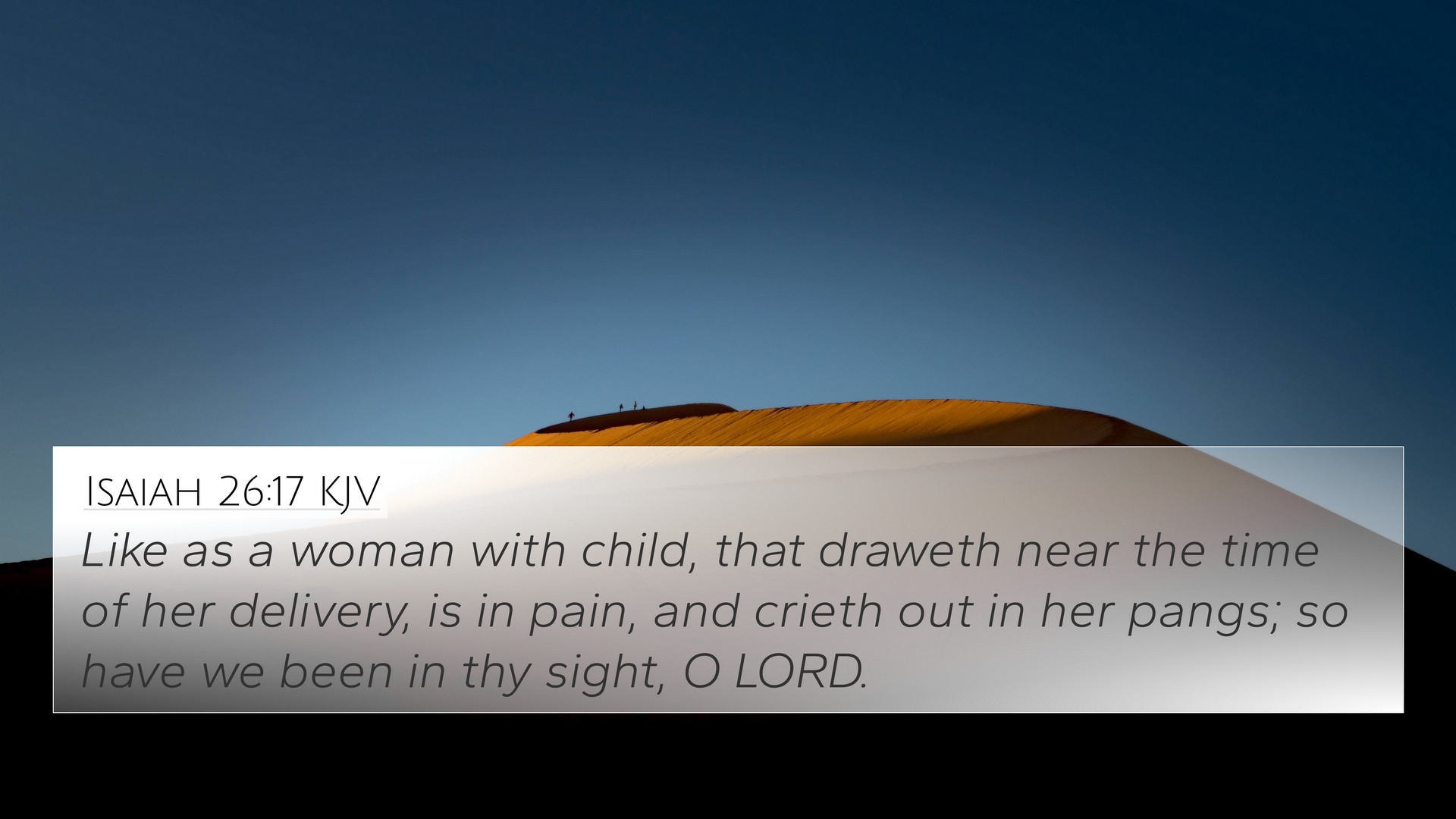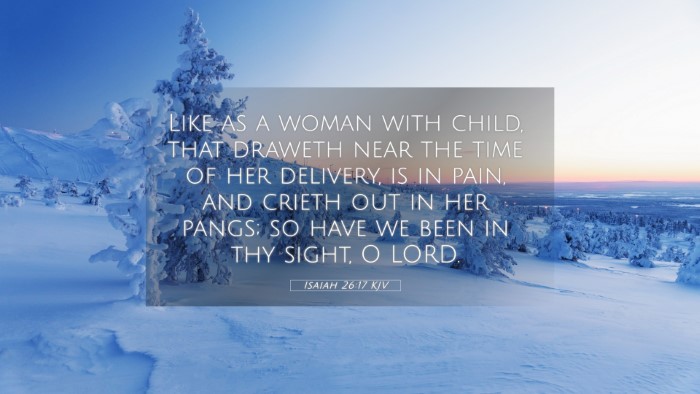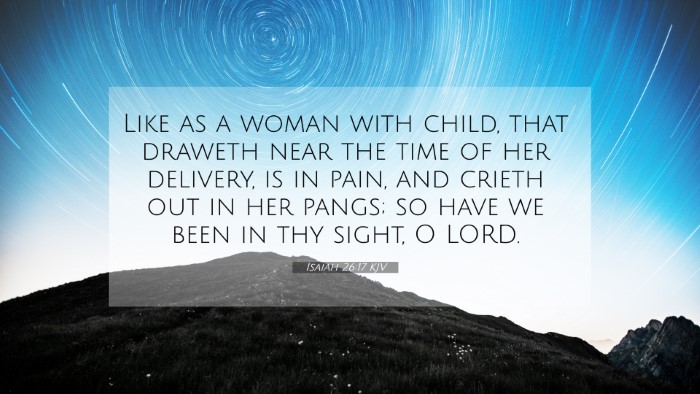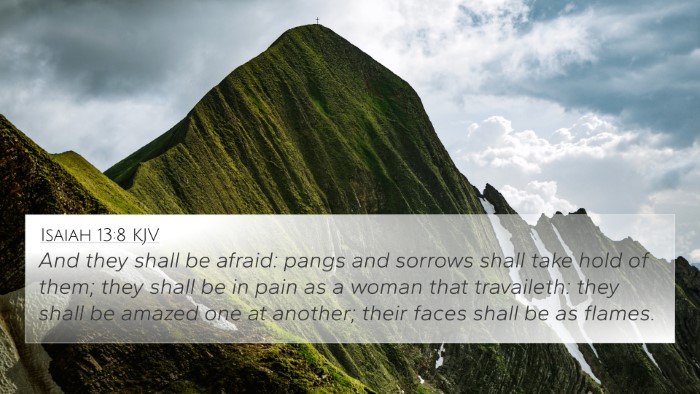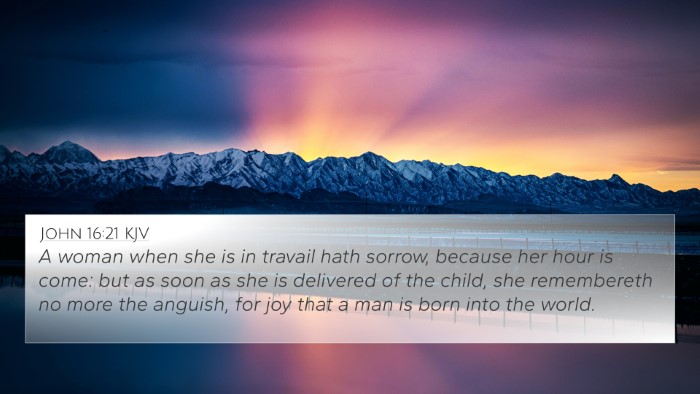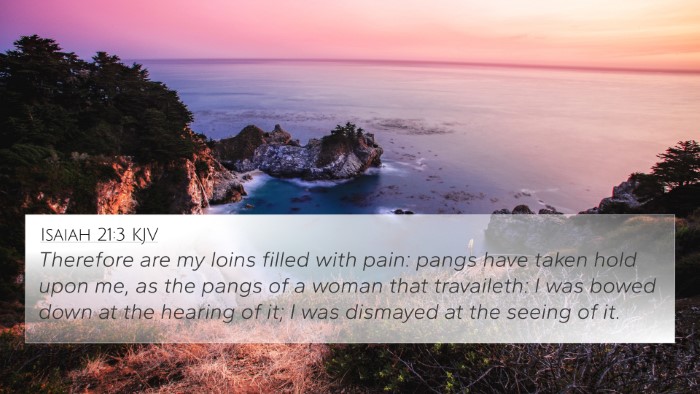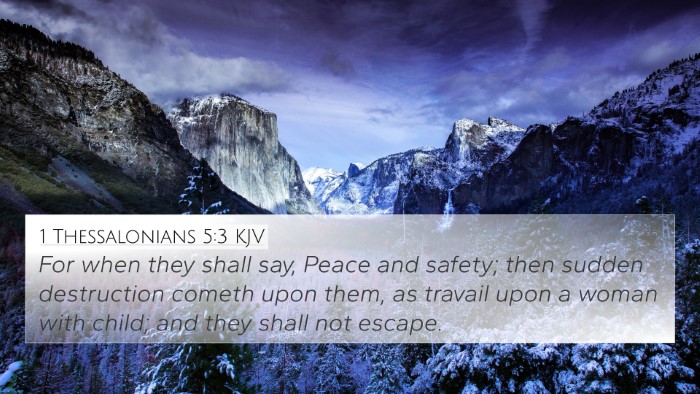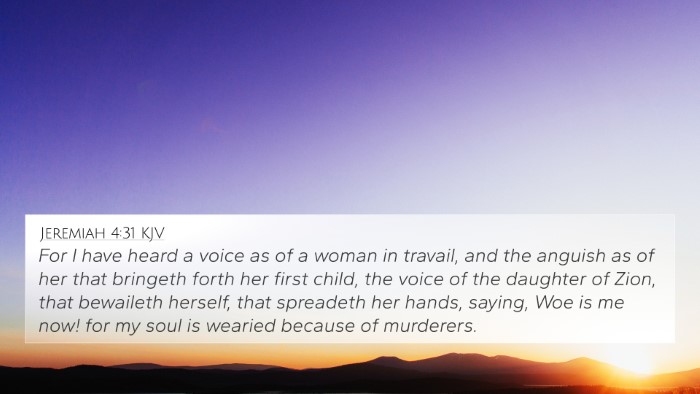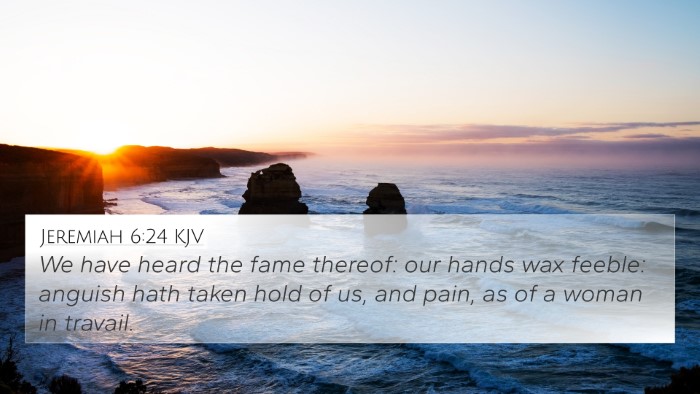Understanding Isaiah 26:17
Isaiah 26:17 states: "Like as a woman with child, that draweth near the time of her delivery, is in pain, and crieth out in her pangs; so have we been in thy sight, O Lord." This verse reflects the deep emotional and spiritual turmoil experienced by the people of Israel, likening their distress to that of a woman in labor.
This passage serves as a poignant metaphor demonstrating the urgency and desperation of their situation, emphasizing dependence on God amidst suffering.
Summary of Insights from Public Domain Commentaries
Insights from various commentaries such as Matthew Henry, Albert Barnes, and Adam Clarke provide a deeper understanding of this verse:
- Matthew Henry: He emphasizes that the painful experience of childbirth illustrates the intense suffering of God's people as they seek His intervention. Henry suggests that just as labor pains ultimately lead to new life, the anguish of the Israelites is a precursor to spiritual renewal, highlighting trust in God's promises.
- Albert Barnes: Barnes interprets this verse as a reflection of the spiritual and emotional upheaval faced by the faithful. He notes that the reference to a woman in labor conveys a sense of inevitable pain that precedes deliverance. This imagery serves to illustrate the hope that follows tribulation, reassuring believers of God's eventual deliverance.
- Adam Clarke: Clarke draws attention to the specific context of Israel's cry for deliverance during times of trial. He indicates that the imagery of childbirth signifies both intensity of suffering and anticipation of relief. Clarke stresses that this suffering is a shared experience in the sight of the Lord, indicating His awareness and presence during their trials.
Thematic Connections
Isaiah 26:17 connects thematically with several other Bible verses, showcasing similar feelings of distress and reliance on God:
- Psalms 34:18: "The Lord is close to the brokenhearted and saves those who are crushed in spirit." This verse reinforces the notion that God is intimately aware of our struggles, much like the situation depicted in Isaiah.
- Psalms 126:5: "Those who sow in tears will reap with songs of joy." The cycle of suffering leading to joy is a recurrent theme in biblical texts, paralleling the imagery in Isaiah 26:17.
- Romans 8:22: "We know that the whole creation has been groaning as in the pains of childbirth right up to the present time." This verse directly echoes the pain in childbirth metaphor, contextualizing suffering as a natural part of spiritual and earthly existence.
- John 16:21: "A woman giving birth to a child has pain because her time has come; but when her baby is born she forgets the anguish because of her joy that a child is born into the world." Here, Jesus speaks to the pain of waiting and the subsequent joy, parallel to what Isaiah communicates.
Connecting with Other Scriptures
In addition to the thematic parallels noted above, Isaiah 26:17 also finds connections with other relevant scriptures:
- Matthew 5:4: "Blessed are those who mourn, for they will be comforted."
- 2 Corinthians 1:4: "Who comforts us in all our tribulation, that we may be able to comfort those who are in any trouble."
- Hebrews 12:11: "No discipline seems pleasant at the time, but painful. Later on, however, it produces a harvest of righteousness and peace for those who have been trained by it."
Conclusion
The emotional gravity captured in Isaiah 26:17 serves not only as a vivid portrayal of despair but also as a significant reminder of hope and redemption. The suffering likened to a woman's labor pains forebodes the blessings to come, fostering a deeper appreciation for God's faithfulness. The insights drawn from various commentaries, alongside the cross-referenced verses, guide readers in comprehensively understanding the layered meanings within this text.
Tools for Bible Cross-Referencing
For further study, consider utilizing resources such as:
- Bible Concordance: A helpful tool for locating passages by keywords.
- Bible Cross-Reference Guide: A systematic approach to linking verses.
- Comprehensive Bible Cross-Reference Materials: These materials provide extensive connections to support deeper understanding.
In your journey to examine the connections between Bible verses, explore various study methods, and embrace the rich tapestry of scripture that guides your faith.
